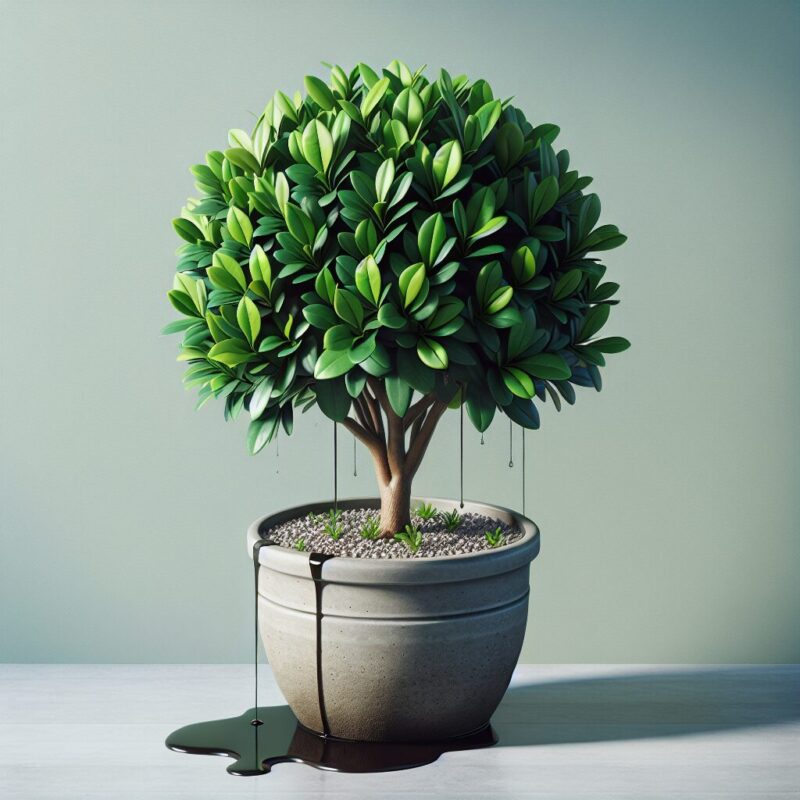The Zz plant, known scientifically as Zamioculcas zamiifolia, is a popular houseplant cherished for its attractive glossy foliage and ability to thrive in low light conditions. This resilient plant is native to Eastern Africa and is a member of the Araceae family. An interesting fact about the Zz plant is that it has evolved to survive long periods of drought by storing water in its rhizomes, which are thick underground stems. This unique adaptation makes it a suitable choice for those who may forget to water their plants regularly or for those who live in regions with inconsistent watering patterns.
In the scorching heat of summer, understanding how often to water your Zz plant becomes crucial to its overall health and appearance. While this plant is known for its ability to tolerate dry conditions, it still requires some watering to thrive during the summer months. Overwatering can lead to root rot or other fungal diseases, while underwatering can cause the plant’s leaves to turn brown and crispy. One key takeaway is that the frequency of watering will largely depend on factors such as the temperature, humidity, and the size of your Zz plant. Additionally, the type of soil and pot it resides in will also impact its water requirements.
Key Takeaways
1. ZZ plants thrive in dry conditions and can tolerate periods of drought. They have water-efficient leaves that store moisture, meaning they should be watered sparingly.
2. The frequency of watering ZZ plants in summer largely depends on the specific conditions and environment. Factors such as temperature, humidity, and the size of the pot can affect the plant’s water needs.
3. A good guideline for watering ZZ plants in summer is to wait until the top inch of soil is dry before watering again. This test can be done by sticking your finger into the soil to check its moisture level.
4. Overwatering can be detrimental to ZZ plants, leading to root rot and other issues. It is better to underwater than to overwater these plants, as they are more tolerant of drought than excessive moisture.
5. ZZ plants may require water more frequently in summer due to increased temperatures and evaporation. However, it is important to strike a balance by allowing the soil to dry out between waterings to prevent waterlogged conditions.
Understanding the Watering Needs of a ZZ Plant in Summer
During the summer months, the watering requirements of a ZZ plant can differ from other seasons. It is important to understand how often you should water your ZZ plant to ensure its health and vitality.
Factors Influencing the Watering Frequency
Several factors play a role in determining how often you should water your ZZ plant in summer:
- Temperature: Higher temperatures result in quicker evaporation, which may increase the watering frequency.
- Humidity: Dry air can lead to faster moisture loss, requiring more frequent watering.
- Pot Size and Drainage: ZZ plants in smaller pots or those with poor drainage may require more frequent watering to prevent waterlogging.
- Plant Size and Health: Mature and healthy ZZ plants may need less water compared to younger or stressed plants.
Signs That Your ZZ Plant Needs Watering
Recognizing the signs of a thirsty ZZ plant is crucial to prevent under-watering. Look for these indicators:
- Wilting: Drooping leaves and stems are a clear sign that your ZZ plant lacks water.
- Dry Soil: Check the top inch of the soil – if it feels completely dry, watering is required.
- Yellowing Leaves: When the ZZ plant lacks water, the leaves may begin to turn yellow and eventually brown.
- Slow Growth: Insufficient water can slow down the growth rate of your ZZ plant.
Best Practices for Watering a ZZ Plant in Summer
To ensure optimal watering for your ZZ plant during the summer months, follow these guidelines:
- Check the Soil Moisture: Before watering, assess the moisture level by gently sticking your finger an inch into the soil. If it feels dry, water the plant.
- Water Deeply: When watering, make sure to thoroughly soak the soil until water drains out of the pot’s drainage holes. This ensures the entire root system receives adequate moisture.
- Avoid Waterlogging: Pay attention to the drainage of the pot and remove any excess water after watering to prevent waterlogging and root rot.
- Consider the Environment: Adjust the watering frequency based on the temperature, humidity, and overall environmental conditions your ZZ plant is exposed to.
- Observe the Plant: Keep a close eye on your ZZ plant and its response to watering. Adjust the frequency if necessary, based on its specific needs.
5 Essential Tips for Watering Your ZZ Plant in Summer
Follow these tips to ensure proper watering of your ZZ plant during the summer:
1. How do I determine the watering frequency for my ZZ plant in summer?
Assess the soil moisture regularly by checking the top inch of the soil. If it feels dry, it’s time to water your ZZ plant.
2. Can I overwater my ZZ plant in summer?
Avoid overwatering your ZZ plant by ensuring proper drainage and allowing the soil to dry out slightly between waterings. This prevents waterlogging and potential root rot.
3. Should I adjust the watering frequency based on the temperature?
Yes, higher temperatures increase evaporation, so you may need to water your ZZ plant more frequently to compensate for moisture loss.
4. Is misting beneficial for a ZZ plant in summer?
Misting may provide some temporary relief for the ZZ plant by increasing humidity, but it should not replace proper watering.
5. Can I use a moisture meter to determine when to water my ZZ plant?
Yes, a moisture meter can help you accurately assess the soil moisture level and determine when to water your ZZ plant in summer.
FAQ
1. How often should I water my ZZ plant during the summer?
During the summer, you should water your ZZ plant approximately once every 1-2 weeks. It is important to let the soil dry out slightly between waterings to avoid overwatering.
2. How do I know if my ZZ plant needs water?
You can check if your ZZ plant needs water by feeling the top inch of the soil. If it feels dry, it is time to water. However, avoid watering if the soil still feels moist, as ZZ plants are known to tolerate drought conditions.
3. Should I adjust the frequency of watering based on the plant size?
Yes, the size of your ZZ plant can affect the watering frequency. Larger ZZ plants require less frequent watering compared to smaller ones. Ensure that you adjust your watering schedule accordingly.
4. Can I use tap water to water my ZZ plant?
Tap water is generally fine for watering ZZ plants. However, if you have particularly hard water or high levels of chlorine in your tap water, it is recommended to use filtered or distilled water to avoid any potential harm to the plant.
5. Is it better to underwater or overwater a ZZ plant in summer?
It is better to slightly underwater than overwater a ZZ plant during the summer. Overwatering can lead to root rot and other issues, while ZZ plants are more tolerant of underwatering and can recover from drought conditions.
6. Should I mist my ZZ plant during the summer?
Misting is not necessary for ZZ plants during the summer. These plants are native to arid environments, so misting may not provide any significant benefit. Instead, focus on providing adequate watering and maintaining proper humidity levels.
7. Can I use a self-watering pot for my ZZ plant?
While self-watering pots can be convenient, they may not be suitable for ZZ plants. These plants prefer well-draining soil, and self-watering pots can lead to excessive moisture retention, increasing the risk of root rot. It’s best to stick to traditional pots with drainage holes.
8. Should I water my ZZ plant differently if it’s placed outdoors?
Yes, if you have placed your ZZ plant outdoors during the summer, you may need to adjust your watering routine. Outdoor conditions can be hotter and drier, so you might need to water more frequently to prevent dehydration.
9. What signs indicate that my ZZ plant is receiving too much water?
If your ZZ plant is receiving too much water, you may notice yellowing or wilting leaves, a soggy or foul-smelling soil, or the appearance of fungus gnats. Adjust your watering schedule and ensure proper drainage to resolve these issues.
10. Is it normal for ZZ plant leaves to droop during summer?
Yes, it is normal for ZZ plant leaves to droop slightly during the summer, especially if the plant is exposed to direct sunlight or high temperatures. However, if the drooping is severe, it may indicate underwatering or overwatering.
Final Thoughts
Proper watering is crucial for the health and well-being of your ZZ plant during the summer months. By following a consistent watering schedule, allowing the soil to dry out between waterings, and paying attention to the plant’s needs, you can ensure optimal growth and overall success with your ZZ plant.
Remember, ZZ plants are native to arid regions, so they are quite resilient when it comes to drought tolerance. Avoiding overwatering and providing adequate drainage are key factors in maintaining a happy and thriving ZZ plant in the summer. Keep a watchful eye on your plant’s condition and make adjustments to the watering routine as needed. With proper care, your ZZ plant will continue to beautify your space with its glossy foliage throughout the summer season and beyond.

